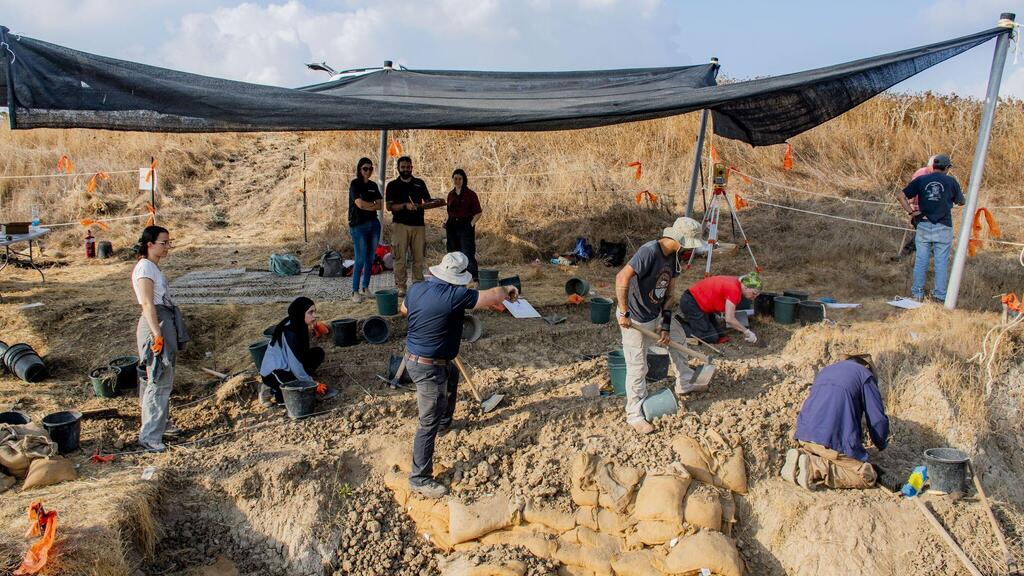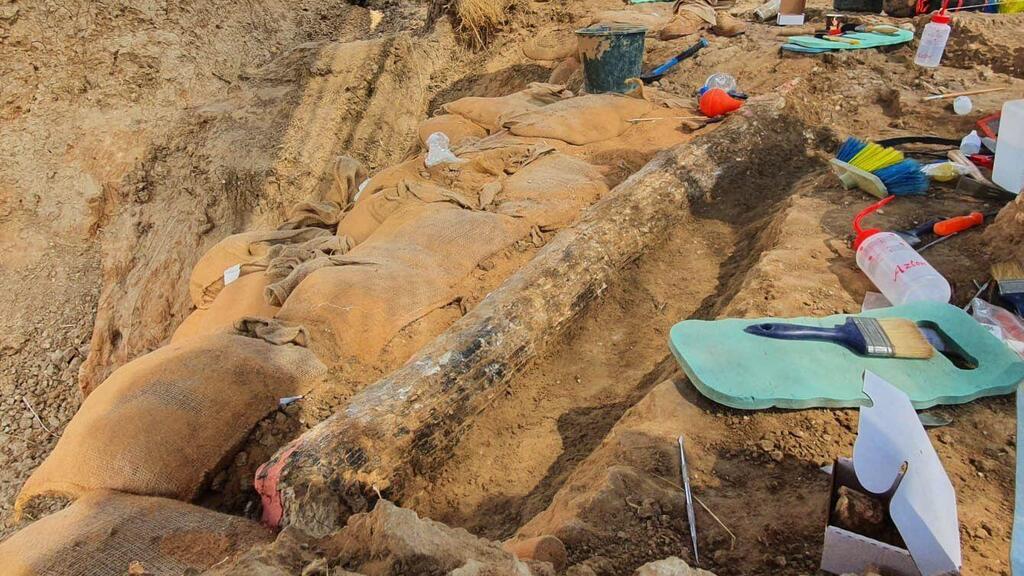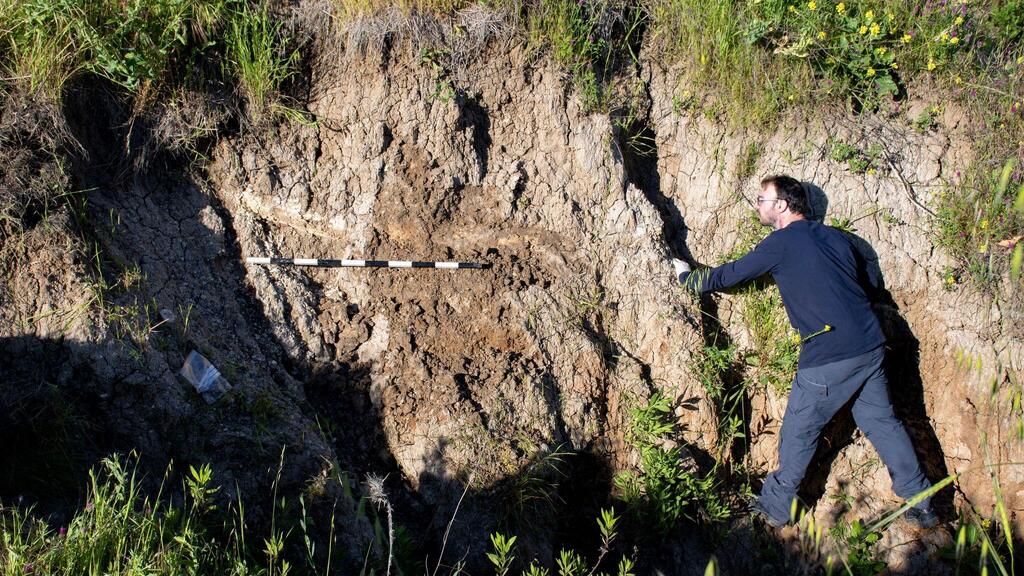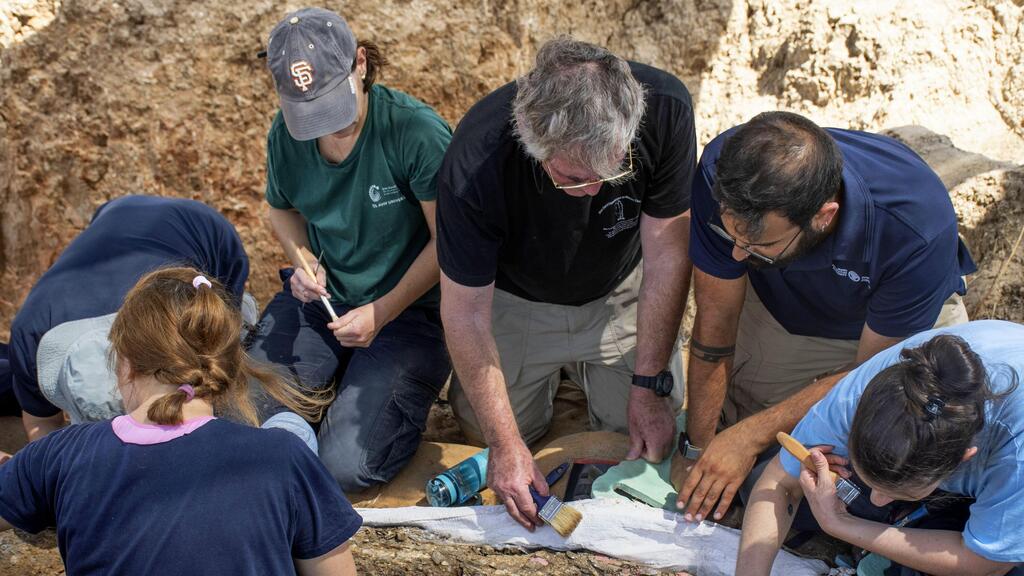Israeli archaeologists recently unearthed the titanic tusk of a prehistoric pachyderm near a kibbutz in southern Israel, a remnant of a behemoth once hunted by early people around half a million years ago.
The Israel Antiquities Authority announced Wednesday that the 2.5-meter long fossil belonging to the long-extinct straight-tusked elephant was found during a joint excavation with researchers from Tel Aviv University and Ben-Gurion University.
Israel Antiquities Authority prehistorian Avi Levy, who headed the dig, said it was "the largest complete fossil tusk ever found at a prehistoric site in Israel or the Near East."
The site was dated to the late lower paleolithic period, around 500,000 years ago, based on stone tools found in the vicinity, the antiquities authority said.
The person who located the tusk was Dr. Eitan Mor, a biologist who read about the existence of prehistoric elephants in the region and set out a goal to discover the species' remains. "I was amazed when I saw something that looked like an animal bone budding from the ground. I got closer, and it looked like 'the real deal', so I reported it."
At the end of an intensive two-week excavation dubbed “Operation Elephant,” specialists from the Antiquities Authority, the Dan David Center for Human Evolution and Biohistory at Tel Aviv University and Ben-Gurion University of the Negev, have excavated the ancient tusk that was concealed in the ground for hundreds of thousands of years.
Prof. Israel Hershkovitz from the Dan David Center for Human Evolution and Biohistory at Tel Aviv University said the fossilized tusk is extremely fragile, and could disintegrate if exposed to the air, sunlight and the human touch.
“The tusk was subjected to an initial conservation treatment when it was first discovered. Now we are excavating it within its archaeological context, before transferring it to the Israel Antiquities Authority Conservation Laboratory, where it will be studied and conserved,” he said.
The tusk was found near a kibbutz on the central plain running parallel to Israel's Mediterranean coast. But half a million years ago, when the ancient elephant died, the now-arid terrain was likely a swamp or shallow lake, an ideal habitat for ancient hominids.
4 View gallery


Archeological site where the tusk was located
(Photo: Yuli Schwartz, Antiquities Authority)
According to the Antiquities Authority, prehistoric elephants roamed the region alongside other large animals, such as wild cattle, hippopotami, deer, wild boars, and wild horses. However, finding elephant remains at archaeological sites is uncommon, and the new discovery is of great scientific interest.
Archaeozoologist Dr. Lee Perry-Gal from the Antiquities Authority said that “the tusk belonged to the straight-tusked elephant species, which first appeared in our region about 800,000 years ago, and 400,000 years ago became extinct. It was a gigantic elephant, larger than the present-day African elephant,”
Omry Barzilai, an IAA archaeologist, said the find was "very puzzling, very enigmatic" because it was not clear whether ancient people hunted the behemoth on the spot or whether they brought the felled animal's tusk to this spot.
He added: “There is an ongoing academic debate about the role of elephants in the Lower Paleolithic period – were they routinely hunted as a central component in the human diet, or were they hunted only on special occasions of social significance? We anticipate that the discovery of the tusk will shed light on this issue.”
Eli Eskozido, head of the Israeli Antiquities Authority, said that “the elephant tusk is an archaeological find of primary importance for the academic community, but also of great public interest. Once the conservation process is completed, we plan to exhibit the tusk to the public in our permanent exhibition hall at the new Jay and Jeanie Schottenstein National Campus for the Archaeology of Israel in Jerusalem.”




